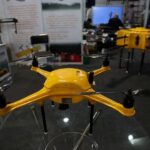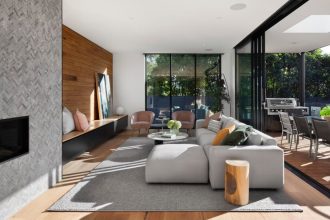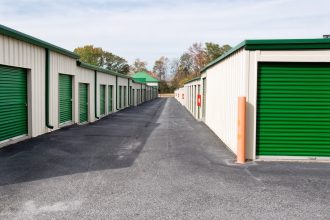Creating a more efficient HVAC system isn’t just about saving money – it’s about optimizing comfort and reducing environmental impact. Whether you’re a homeowner looking to cut energy bills or a facility manager aiming to enhance operational efficiency, these six game-changing tips will help you achieve a more efficient HVAC system.
1. Regular Services
These services typically involve cleaning or replacing air filters, checking and adjusting refrigerant levels, inspecting and cleaning coils, lubricating moving parts, and testing system controls. For regular maintenance, Aire Texas can schedule comprehensive inspections and tune-ups to ensure your HVAC system operates efficiently year-round. By investing in regular HVAC maintenance, you not only improve energy efficiency but also enhance indoor air quality and extend the lifespan of your equipment, ultimately saving money in the long run.
2. Invest in a Programmable Thermostat
A programmable thermostat allows you to set temperatures based on your schedule, optimizing energy use when you’re home and reducing it when you’re away. For example, during winter, you can set lower temperatures when everyone is asleep or out of the house, then program it to warm up before you wake or return. This simple adjustment can result in significant energy savings without sacrificing comfort. Consider upgrading to a smart thermostat for added convenience, as they learn your habits and can be controlled remotely via smartphone apps.
Customized Temperature Settings
Programmable thermostats allow you to create customized heating and cooling schedules based on your daily routine. For example, you can set different temperatures for weekdays and weekends, ensuring optimal comfort when you’re at home and saving energy when you’re away. This flexibility not only reduces energy consumption but also lowers utility bills over time.
Smart Technology Integration
Many programmable thermostats are now equipped with smart technology features. These devices can learn your heating and cooling preferences over time and adjust settings automatically to maximize efficiency. Some models can also be controlled remotely via smartphone apps, allowing you to monitor and adjust temperatures from anywhere, ensuring comfort upon arrival without wasting energy in your absence.
Energy Savings
By optimizing temperature settings according to your schedule, programmable thermostats can significantly reduce your HVAC system’s workload. This efficiency translates into lower energy bills, as your heating and cooling equipment operates more efficiently and consumes less energy overall. Over a year, these savings can add up, making programmable thermostats a smart long-term investment for any household or business.
Environmental Impact
Decreasing energy consumption through programmable thermostats not only benefits your wallet but also reduces your carbon footprint. By using less energy to heat or cool your space, you contribute to environmental conservation efforts and help mitigate climate change. Programmable thermostats promote sustainability by encouraging responsible energy usage without compromising comfort, aligning with global initiatives to reduce greenhouse gas emissions and conserve natural resources.
3. Seal and Insulate for Better Efficiency
Leaky ducts and poorly insulated spaces can cause your HVAC system to work overtime. Inspect ductwork for leaks and seal them properly with mastic sealant or metal tape. Additionally, ensure that your home or building is well insulated, especially in attics, basements, and crawl spaces. Proper insulation helps maintain consistent temperatures indoors, reducing the workload on your HVAC system and lowering your energy bills.
4. Upgrade to High-Efficiency Equipment
If your HVAC system is outdated, upgrading to high-efficiency equipment can yield significant energy savings over time. Look for units with high Seasonal Energy Efficiency Ratio (SEER) ratings for air conditioners and Annual Fuel Utilization Efficiency (AFUE) ratings for furnaces. Although the initial investment may be higher, modern HVAC systems are designed to be more energy-efficient, which translates to lower utility bills and reduced environmental impact.
5. Optimize Airflow with Proper Ventilation
Good airflow is essential for HVAC efficiency. Make sure that air vents and registers are not blocked by furniture, carpets, or drapes, as this can restrict airflow and force your system to work harder. Keep supply and return vents clear and clean to ensure optimal air circulation throughout your space. In commercial settings, consider using demand-controlled ventilation systems that adjust airflow based on occupancy levels, improving efficiency without compromising indoor air quality.
6. Embrace Technology for Remote Monitoring
Remote monitoring technology allows you to keep tabs on your HVAC system’s performance from anywhere. By monitoring energy consumption, temperature trends, and equipment status remotely, you can identify potential issues early, optimize settings for efficiency, and even schedule maintenance proactively. Some systems can automatically alert you and your HVAC technician to problems, minimizing downtime and repair costs while maximizing efficiency.
Achieving a more efficient HVAC system requires a combination of regular maintenance, strategic upgrades, and smart technology utilization. By implementing these six game-changing tips – from regular maintenance and programmable thermostats to proper insulation and high-efficiency upgrades – you can enhance comfort, reduce energy consumption, and contribute to a more sustainable environment. Whether at home or in a commercial setting, optimizing your HVAC system not only saves money but also improves overall operational efficiency and comfort levels year-round.














